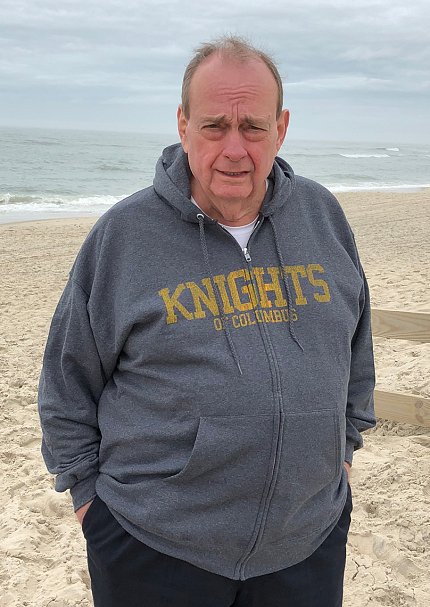Taylor Retires After 27 Years of Federal Service

Dr. Fred Taylor, leader of NIGMS’s Division for Research Capacity Building, recently said farewell to a distinguished career at NIH. One of his many accomplishments was helping develop the Institutional Development Award (IDeA), a program that builds research capacity in states that historically have had low levels of NIH funding.
Raised in an Italian family in Sacramento, Taylor’s youth included surfing in the California sun, playing soccer and contributing time to his church. When he entered St. Mary’s College of California, he studied theology and biology. He graduated with a degree in biology and ultimately pursued a master’s degree in biological sciences at California State University, Sacramento.
With one master’s degree in tow, Taylor developed his interest in cardiovascular physiology and human adaptation to the space environment at a NASA-supported laboratory at the University of Texas Health Science Center at Dallas. He went on to receive another master’s degree in systems physiology and a Ph.D. in physiology and then received postdoctoral training in pharmacology at the University of Texas Health Science Center at San Antonio.
Taylor’s early research focused on how the nervous system controls heart function. Later, he studied how the human body regulates blood flow to control body temperature and performance capacity. His goal was to understand how interventions such as exercise affect blood flow in skin and muscle in extreme environments.
Taylor devoted subsequent years to the Naval Medical Research Institute (NMRI). As a director, he conducted field and laboratory research with Navy saturation divers and special operations forces (Navy SEALS, Air Force Special Operations). Working with these teams in extreme environments, he investigated how to enhance work capacity and cold tolerance.
During Taylor’s time at NMRI, he also met his wife, Elaine. Taylor recalls that a colleague made a video that included footage of Taylor. The colleague happened to show the video to his sister-in-law, Elaine. On noticing Taylor in the video, Elaine asked, “Who’s that weird guy?” Taylor’s colleague brought the two together and the rest is history.
In 1998, Taylor transitioned from NMRI to NIH’s former National Center for Research Resources, where he stayed for 13 years. His accomplishments with IDeA continued when the program transferred to NIGMS in 2011.
“My work at NIH has fulfilled me in a special way,” he said. “I not only got to satisfy my goals as a scientist in trying to establish an outstanding research agenda to address the health needs of the country, [but also] I served my needs as a person by helping people find their way into science and build research communities that engage in new ideas.”
Dr. Rashada Alexander, a program director at NIGMS, describes Taylor as honest, practical and always willing to share his insights. She adds, “One of Fred’s biggest contributions to NIH is two-way empowerment. His support and advocacy for research capacity building has empowered our stakeholder and research community to obtain resources and then to do tremendous things with those resources. He’s also empowered NIH as an agency to expand how we consider the research enterprise and ensure that it reaches and affects the people in the farthest corners of this nation. That’s a lasting legacy.”
“Fred’s enthusiasm for our capacity building programs was contagious,” said NIGMS director Dr. Jon Lorsch. “He did extraordinary things to build communities among researchers as well as foster collaboration among NIH staff and extramural scientists. He was masterful at speaking to Congress and others about the importance of research capacity building. Fred has been an extremely important mentor to me. We will all miss him very much.”
Taylor intends to spend his retirement enjoying the ocean, gardening, reading and learning to play the piano. In addition, he’ll continue his activities with the Knights of Columbus and hopes to do more volunteer and community work with his wife.
He notes, “I’ve always been a planner, and so far in my life, I can’t think of one thing I’ve planned that’s actually occurred. What I tell young people who ask me for advice is, don’t be worried. You’re not gonna be able to control everything. Just follow the currents in your life and make the best of your opportunities.”
